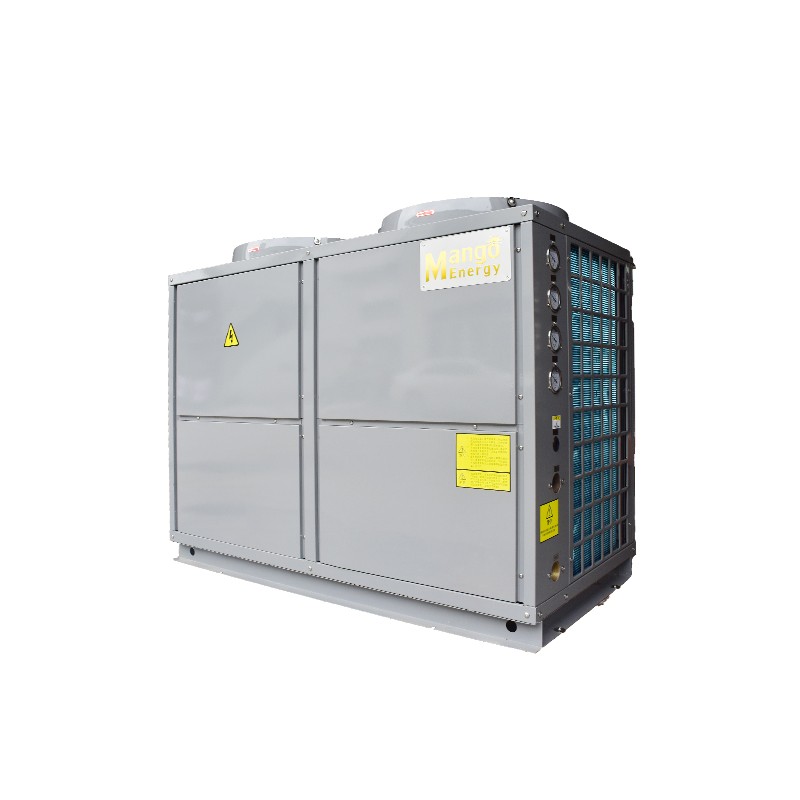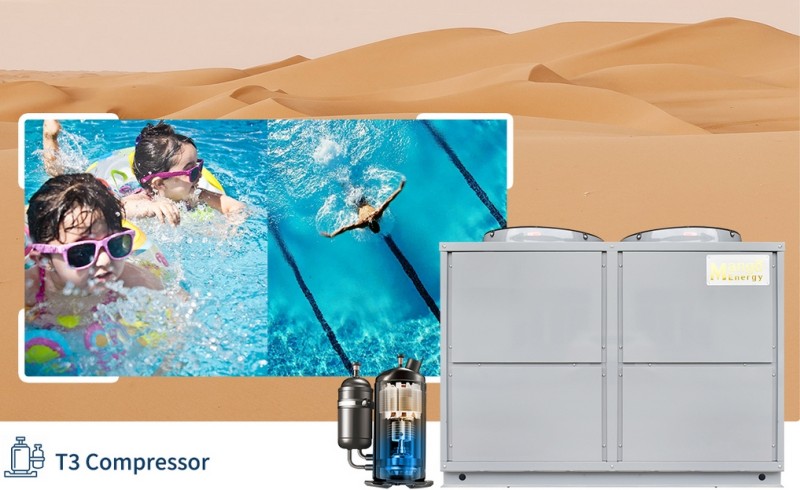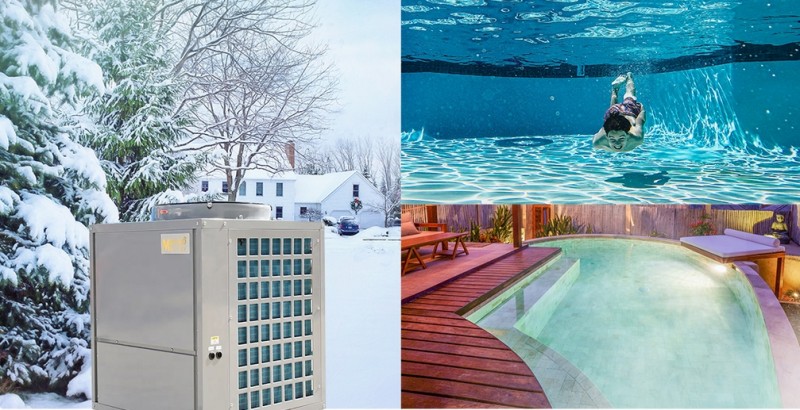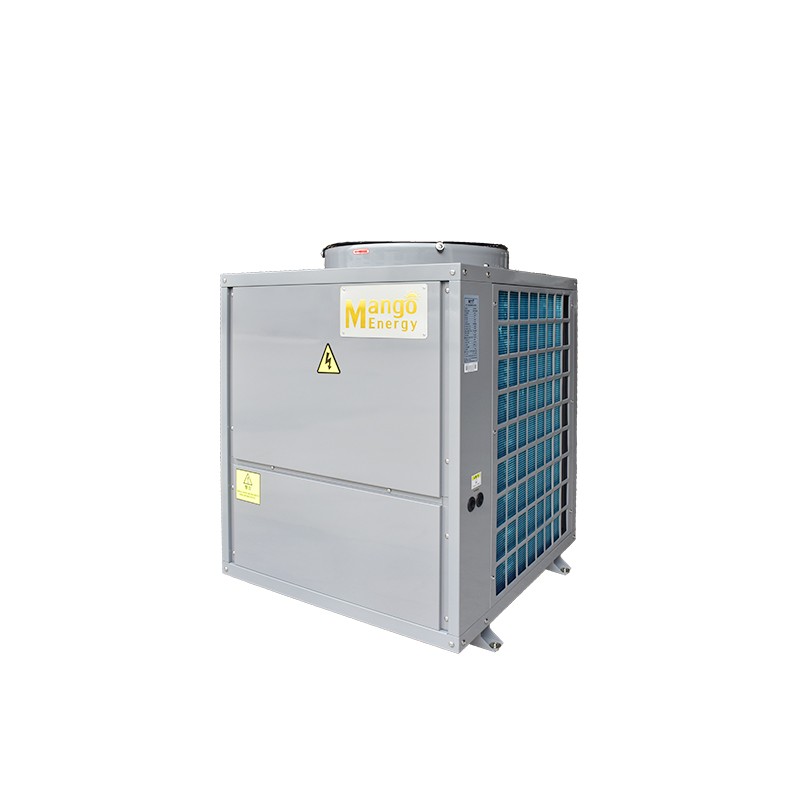
A pool air source heat pump is an excellent investment for heating your swimming pool efficiently and cost-effectively. Whether you're using a swimming pool heat pump for residential or commercial purposes, it is essential to perform regular maintenance to ensure optimal performance, longevity, and energy efficiency. Proper maintenance not only helps avoid unexpected breakdowns but also extends the lifespan of your commercial pool air source heat pump. In this article, we’ll explore the essential maintenance tasks required to keep your pool air source heat pump running smoothly throughout the year.

1. Regular Cleaning of the Air Filters
The air filters in your pool air source heat pump play a crucial role in maintaining airflow, which is necessary for the heat exchange process. Over time, these filters can become clogged with dirt, debris, and dust, which can reduce the efficiency of your heat pump and lead to overheating. For optimal performance, it’s important to clean or replace the filters regularly.
How Often to Clean:
For residential pools, cleaning the filters once every 1-2 months is typically sufficient, especially during the swimming season.
For commercial pool air source heat pumps, filters should be checked more frequently due to the higher volume of use. Cleaning or replacing the filters every 1-3 months is recommended.
To clean the filters, simply remove them from the heat pump, wash them with water, and allow them to dry before reattaching them. If the filters are damaged or excessively worn, replace them with new ones.
2. Checking and Cleaning the Evaporator and Condenser Coils
The evaporator and condenser coils are critical components in your swimming pool heat pump. These coils facilitate heat exchange, allowing the pump to absorb heat from the air and transfer it to the pool water. Over time, dirt, leaves, and other debris can accumulate on the coils, which can obstruct airflow and cause the heat pump to operate inefficiently.
How to Clean:
Turn off the heat pump and ensure that the area is safe to access.
Inspect the coils for any visible buildup.
Gently brush the coils using a soft brush or a vacuum cleaner with a hose attachment to remove any debris.
In case of stubborn dirt, consider using coil cleaner (ensure it’s suitable for your model) or gently rinse the coils with water.
When to Clean:
Cleaning the coils at least once or twice a year is recommended.
Commercial pool air source heat pumps may require more frequent cleaning, particularly if the unit is located in areas with high dust or pollen levels.
3. Inspecting the Condensate Drain
The condensate drain is responsible for removing excess moisture from the heat pump. If the drain becomes clogged, water may accumulate inside the unit, leading to potential damage or decreased efficiency. Regularly inspecting and clearing the condensate drain is essential for smooth operation.
How to Inspect:
Look for any visible blockages around the drain.
Use a small brush or pipe cleaner to clear any debris from the drain line.
Frequency of Inspection:
It’s a good idea to check the condensate drain every 3-4 months during peak seasons.
In commercial pool air source heat pumps, the drain should be checked more often due to increased usage.
4. Checking Refrigerant Levels
A pool air source heat pump relies on refrigerant to absorb heat from the air and transfer it to the pool water. Low refrigerant levels can significantly reduce the heat pump’s efficiency and cause it to malfunction. Regularly checking the refrigerant levels is crucial for ensuring that your system operates at peak efficiency.
How to Check:
Refrigerant levels should be checked by a certified technician, as handling refrigerants requires special expertise and safety precautions.
If you notice that your swimming pool heat pump is no longer heating effectively, it could indicate a refrigerant leak or depletion.
When to Check:
Ideally, have the refrigerant levels checked during the annual maintenance visit.
If your heat pump is not heating the pool water properly or if you hear strange noises, it may be time to have the refrigerant levels checked.
5. Inspecting the Heat Pump’s Overall Condition
Regularly inspecting your commercial pool air source heat pump for any signs of wear and tear or damage is essential. Look for cracks, leaks, or visible rust, which can indicate potential issues with the unit. Additionally, ensure that all electrical components are in good working condition to avoid safety hazards.
What to Look For:
Check the casing and structure for any signs of damage.
Ensure that all connections are secure and free from leaks.
Check the unit’s operation during startup and shut down for any unusual sounds, such as grinding or hissing, which could indicate mechanical issues.
Frequency of Inspection:
Inspect the heat pump at least once a year.
If the heat pump is used frequently, such as in commercial pool air source heat pump systems, inspect it more often (e.g., every 3-6 months).
6. Monitor the Pool Water Temperature
Occasionally monitor the pool water temperature to ensure the heat pump is delivering the desired heating performance. If the water temperature isn’t reaching your desired level, it could be a sign that the heat pump is not operating as efficiently as it should. Regularly monitor the thermostat and check for any inconsistencies in the pool temperature.
When to Monitor:
Regularly throughout the pool season, especially if you notice any performance issues or changes in water temperature.
For commercial pool air source heat pumps, more frequent monitoring may be required to ensure that the water temperature is consistent and suitable for guests.
7. Annual Professional Servicing
While many maintenance tasks can be performed by pool owners themselves, it’s a good idea to have a professional technician service your pool air source heat pump at least once a year. A professional technician can perform more in-depth maintenance tasks, such as checking refrigerant levels, assessing electrical components, and ensuring the system is working at maximum efficiency.
When to Service:
Schedule professional servicing before the start of the swimming season or at the end of the season to ensure the unit is in good condition for the next cycle.
Maintaining your pool air source heat pump is essential to ensure it operates efficiently, lasts longer, and provides consistent heating for your pool. By following these basic maintenance steps—cleaning filters, inspecting coils, checking the condensate drain, monitoring refrigerant levels, and performing routine inspections—you can prevent costly repairs and maximize the performance of your swimming pool heat pump. Whether you have a residential pool or a commercial pool air source heat pump, regular care and professional servicing will ensure that your system provides reliable, energy-efficient heating for years to come.





